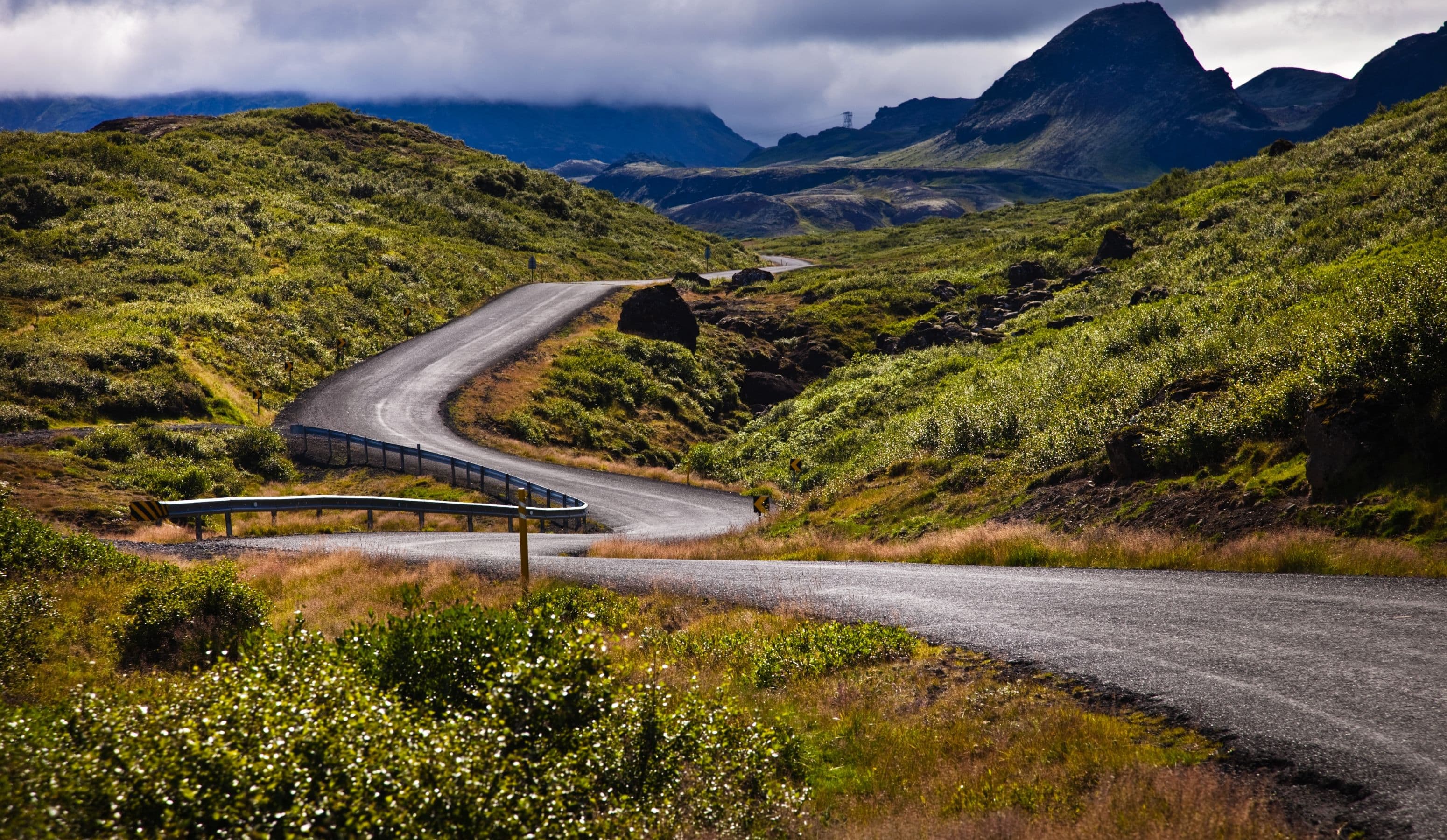
Activities
A Road Trip Around Iceland’s Ring Road: What to Expect
The ultimate way to explore this island’s diverse offerings is by embarking on the famous Ring Road, or Route 1, a 1,332-kilometer (828-mile) loop that circles the country. While many visitors only make a quick stop in Reykjavik or head straight to the Golden Circle, a road trip around the Ring Road offers a much deeper and more rewarding experience. This comprehensive guide will take you through a 10-day itinerary around Iceland's Ring Road, highlighting must-see destinations, travel tips, and safety precautions for summer and winter trips.
Day 1: Exploring Reykjavik

Your journey starts in Reykjavik, Iceland’s charming and colorful capital. Spend your first day getting a feel for the city, which is both cozy and cosmopolitan. Take a leisurely stroll down Laugavegur, Reykjavik’s main street, packed with unique shops, cafés, and restaurants. Visit Hallgrímskirkja, the iconic church that offers sweeping views of the city from its tower, or explore Harpa Concert Hall, known for its stunning glass façade and cultural events.
For a bit of Icelandic history, stop by the National Museum of Iceland, or if you’re into more unique experiences, consider a visit to the Icelandic Phallological Museum for a quirky detour.
Winter Tip:
During the winter months, daylight is limited, so plan your city exploration for the few hours of sunlight. If you’re lucky, the Northern Lights might make an appearance even over the capital’s skies!
Summer Tip:
In summer, Reykjavik has nearly 24 hours of daylight, so take advantage of the midnight sun to explore more of the city, enjoy late dinners, or even join a whale-watching tour in the evening.
Day 2: Reykjavik to South Iceland (Vík and the South Coast)

Depart Reykjavik early, heading towards South Iceland. The southern coast is known for its dramatic landscapes, including black sand beaches, glaciers, and powerful waterfalls.
- Seljalandsfoss: This is a 60-meter-high waterfall that you can walk behind for a unique perspective. Be prepared to get a little wet!
- Skógafoss: One of Iceland’s largest waterfalls, it’s a sight to behold. Climb the stairs beside it to get a panoramic view of the surrounding area.
- Dyrhólaey: A picturesque promontory offering views of the coastline and the famous Reynisfjara Black Sand Beach.
- Reynisfjara Beach: Known for its basalt columns and fierce Atlantic waves, Reynisfjara is a must-visit, but always keep your distance from the water due to strong sneaker waves.
Winter Tip:
Winter driving in South Iceland can be tricky due to icy roads and wind gusts. Always check road.is for updates on road conditions and safetravel.is for alerts. In winter, the waterfalls can become icy, so wear proper footwear to avoid slipping.
Summer Tip:
In summer, the green landscape around the waterfalls is stunning, and you may even spot puffins around Dyrhólaey. Take your time and enjoy long daylight hours.
Day 3: South Iceland to Southeast Iceland (Jökulsárlón Glacier Lagoon)
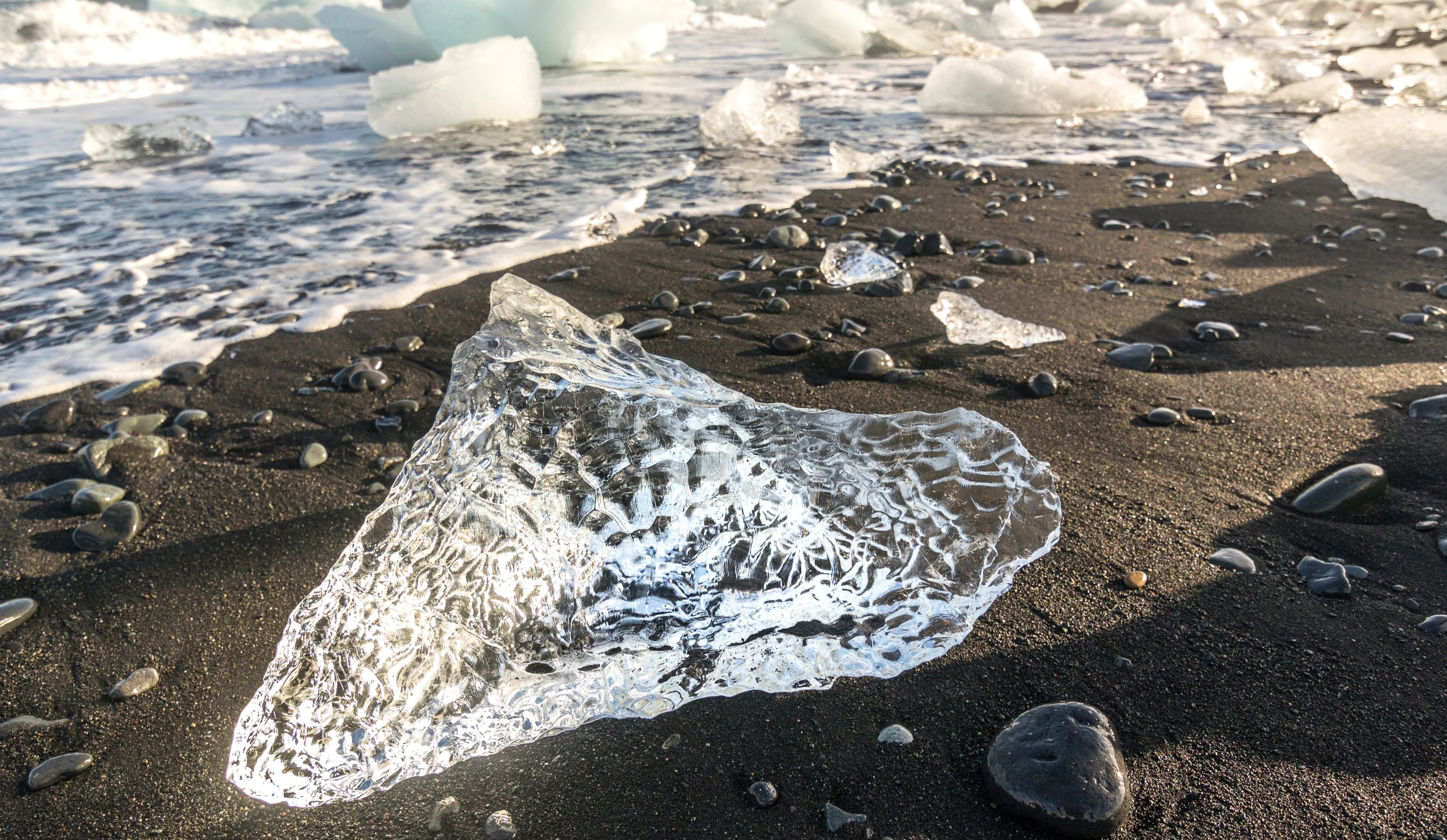
Your journey continues towards the southeast, where glaciers and lagoons dominate the landscape.
- Skaftafell National Park: A great place for hiking, with trails leading to the beautiful Svartifoss waterfall and the glacier tongue Skaftafellsjökull.
- Jökulsárlón Glacier Lagoon: Perhaps the most magical stop on your Ring Road journey, this glacial lagoon is filled with icebergs that have broken off from Breiðamerkurjökull glacier. Take a boat tour to get up close with these frozen giants.
- Diamond Beach: Just across from Jökulsárlón, this black sand beach is scattered with icebergs that have washed ashore, creating a dazzling contrast.
Winter Tip:
In winter, Jökulsárlón is often frozen, adding to its ethereal beauty. You might also have the opportunity to explore one of Iceland’s famous ice caves. Ensure you join a guided tour as entering the caves independently is dangerous.
Summer Tip:
In summer, consider a glacier hike in Skaftafell or a zodiac boat tour on Jökulsárlón for a close-up view of the icebergs.
Day 4: Southeast Iceland to East Fjords (Egilsstaðir and Seyðisfjörður)
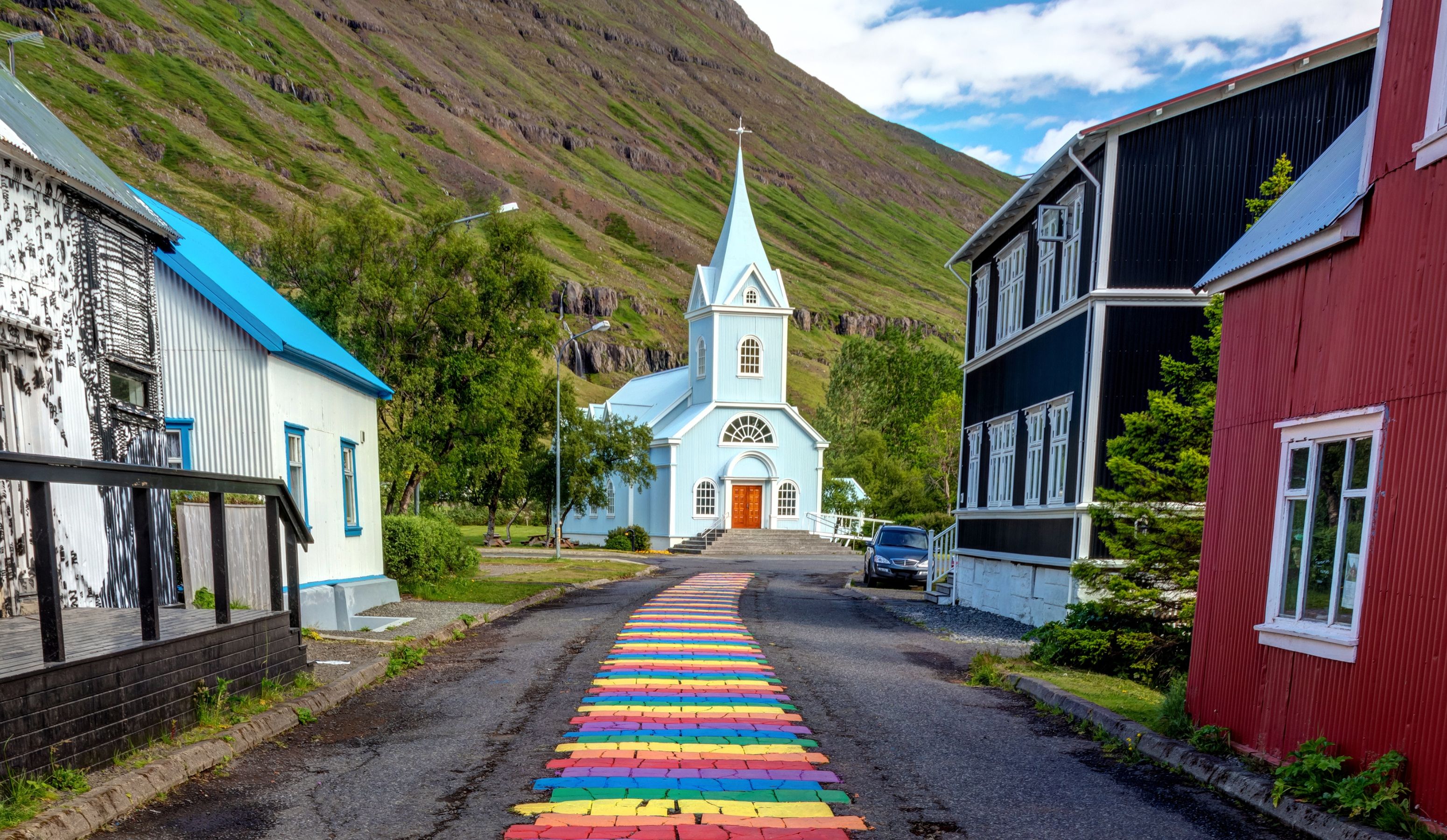
The drive from the southeast to the East Fjords is one of the quieter parts of the Ring Road, but it offers incredible coastal views and remote fjords.
- Djúpivogur: A charming fishing village known for its art installations and peaceful atmosphere.
- Egilsstaðir: The largest town in East Iceland, located by the Lagarfljót river. It's a great place to stock up on supplies.
- Seyðisfjörður: A short drive from Egilsstaðir, Seyðisfjörður is one of Iceland’s most picturesque towns, known for its colorful houses and vibrant arts scene.
Winter Tip:
The East Fjords can be snowy and icy in winter, so take extra care on the winding roads. The area is less touristy during this season, offering a serene and peaceful atmosphere.
Summer Tip:
Summer brings long, bright days and opportunities for hiking in the East Fjords. The scenic drive along the coast is a highlight, and you might even spot reindeer grazing.
Day 5: North Iceland (Lake Mývatn and Húsavík)

As you head into North Iceland, the landscape changes dramatically, with volcanic craters, hot springs, and whale-watching opportunities.
- Lake Mývatn: This volcanic area is famous for its unique landscapes, including the Skútustaðagígar pseudo craters, Dimmuborgir lava formations, and Grjótagjá hot spring cave.
- Dettifoss Waterfall
- Ásbyrgi Glacial Canyon
- Húsavík: Often called the whale-watching capital of Iceland, Húsavík offers excellent opportunities to see whales, especially in summer. The Húsavík Whale Museum is also worth a visit.
Winter Tip:
In winter, many of the hiking trails around Lake Mývatn may be closed, but you can still enjoy the Mývatn Nature Baths, Iceland’s less-crowded alternative to the Blue Lagoon.
Summer Tip:
In summer, don’t miss a hike up Hverfjall, a large volcanic crater, and take a dip in the Mývatn Nature Baths under the midnight sun.
Day 6: North Iceland (Akureyri and the Troll Peninsula)
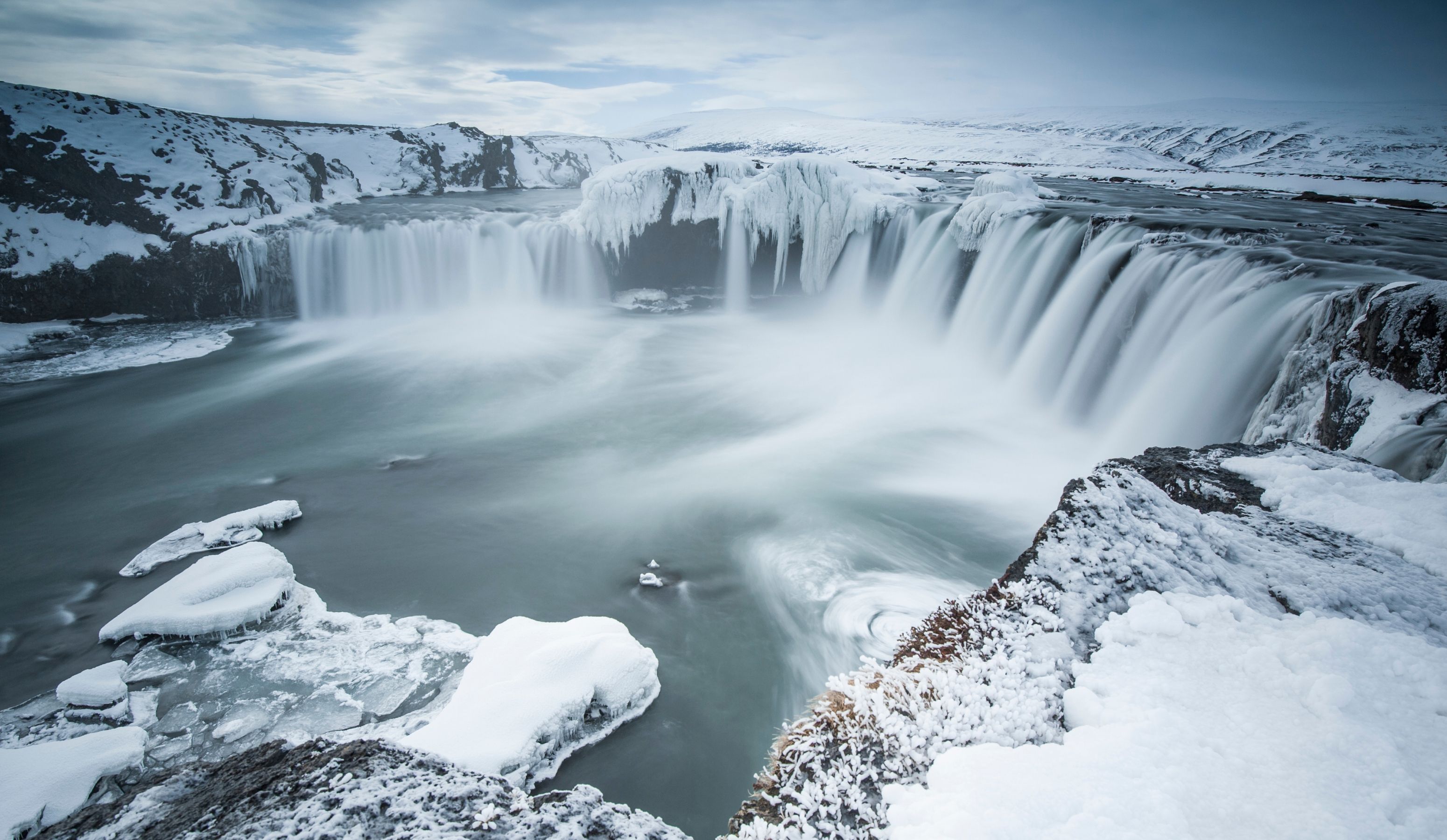
- Akureyri: Iceland’s second-largest city is a delightful stop. Explore the botanical gardens, walk around the old town, and visit the Akureyri Church.
- Goðafoss: This stunning waterfall, known as the “Waterfall of the Gods,” is located just outside Akureyri.
- Troll Peninsula: Known for its towering mountains and deep fjords, the Troll Peninsula is a great place for hiking in summer and skiing in winter.
- Siglufjörður
Winter Tip:
The Troll Peninsula is a haven for winter sports enthusiasts, with plenty of opportunities for skiing and snowboarding.
Summer Tip:
Hike in the mountains or take a scenic drive along the fjords. The area is less touristy, offering plenty of peaceful spots to take in the views.
Day 7: Akureyri to West Iceland (Snæfellsnes Peninsula)
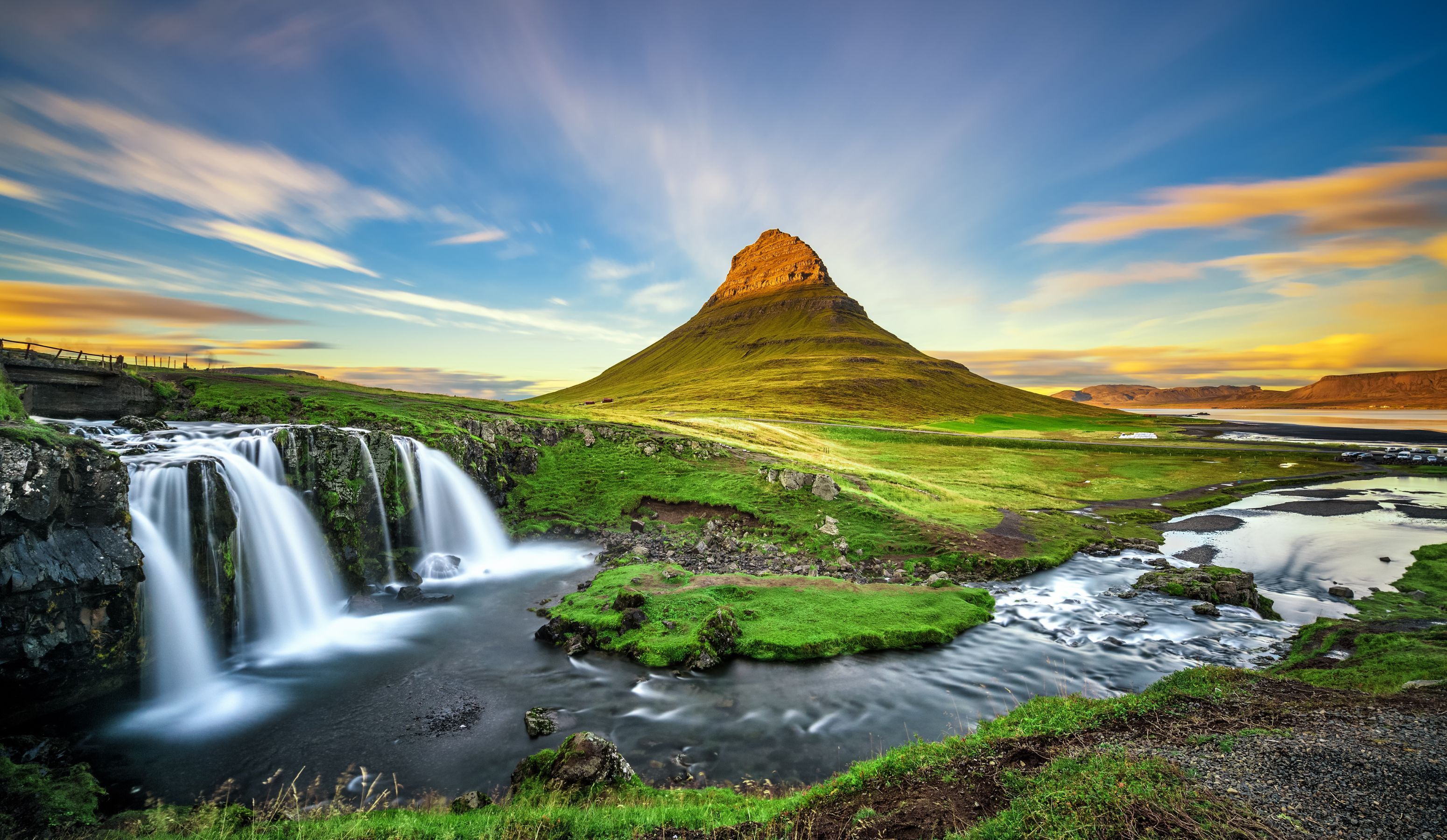
Today, you’ll drive towards West Iceland and the Snæfellsnes Peninsula, often referred to as “Iceland in Miniature” because it offers a little bit of everything.
- Kirkjufell: This iconic, cone-shaped mountain is one of the most photographed in Iceland, especially with Kirkjufellsfoss waterfall in the foreground.
- Snæfellsjökull National Park: Dominated by the Snæfellsjökull glacier-volcano, this area offers stunning coastal walks, black sand beaches, and lava fields.
- Stykkishólmur
- Djúpalónssandur
- Lóndrangar rock formations
- Arnarstapi
- Búðakirkja – Black church in Búðir
- Ytri Tunga – a beach where you might see seals
Winter Tip:
Snow and ice can make hiking on Snæfellsnes more challenging in winter, but the peninsula’s dramatic winter landscapes are worth the visit. Keep an eye on the weather and road conditions.
Summer Tip:
In summer, consider hiking in Snæfellsjökull National Park or taking a boat tour to explore the coastline and its wildlife.
Day 8: West Iceland (Reykholt and Hraunfossar)
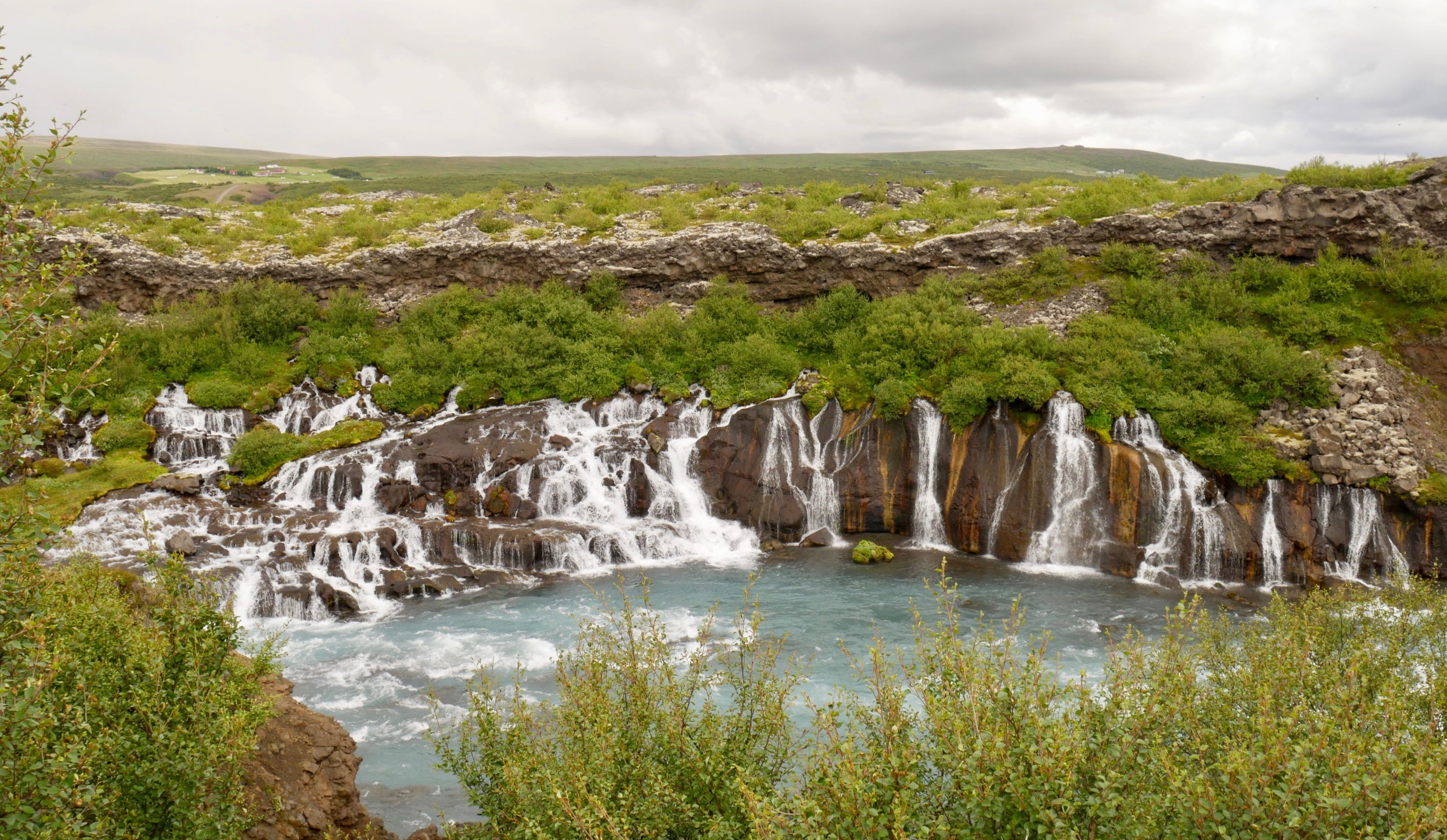
West Iceland is filled with natural wonders and historical sites.
- Reykholt: Once the home of Snorri Sturluson, a medieval historian and chieftain, Reykholt is an important site for Icelandic history. Visit Snorri’s hot pool and the Snorrastofa museum.
- Nearby, you’ll also find Barnafoss, a turbulent, narrow waterfall.
- Deildartunguhver: Europe’s most powerful hot spring, Deildartunguhver pumps out boiling water at an astonishing rate. You can feel the steam rising around you as you walk on the paths nearby. Don’t miss the opportunity to relax in the hot tubs at Krauma Geothermal Baths, which are filled with water from Deildartunguhver, mixed with cool glacier water for the perfect soaking temperature.
- Húsafell: This small settlement is a great base for hikes or exploring the nearby Hraunfossar and Barnafoss waterfalls. Húsafell also has a heated outdoor swimming pool, a perfect way to unwind after a day of exploration.
- Víðgelmir Lava Cave: One of Iceland’s largest lava caves, located near Húsafell. A guided tour will take you through stunning lava formations, stalactites, and stalagmites. It’s a fantastic experience for anyone fascinated by geology and Iceland’s volcanic history.
Winter Tip:
In winter, the waterfalls take on a magical, frozen appearance, and the area is less crowded, making it ideal for quiet reflection.
Summer Tip:
The landscape around the waterfalls is lush and green in summer, offering excellent photo opportunities.
Day 9: Return to Reykjavik
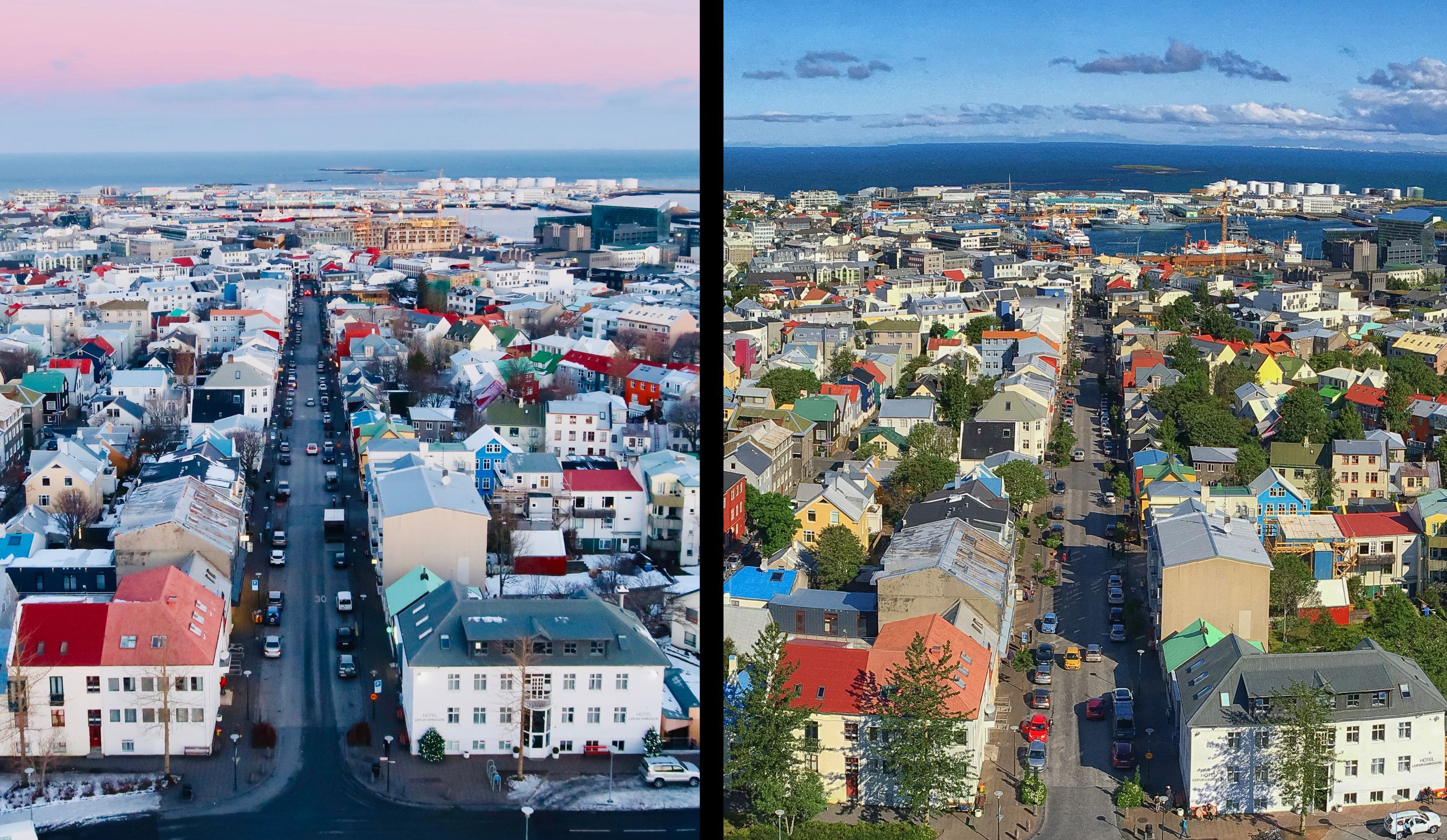
Your Ring Road adventure concludes as you head back to Reykjavik from West Iceland. If you’re leaving early, consider stopping at Akranes on the way for a visit to the Akranes Lighthouse, where you can climb to the top for stunning coastal views.
Once back in Reykjavik, you’ll have time to reflect on the incredible journey you’ve just completed. If you have an afternoon or evening to spare, perhaps revisit one of the city’s local pools, like Laugardalslaug, for a relaxing soak. Or, enjoy a final dinner at one of Reykjavik’s fantastic restaurants, like Dill for a modern Nordic tasting menu, or Sægreifinn for traditional seafood.
Winter Tip:
Winter weather can delay your return to Reykjavik, so always keep a flexible schedule when driving in Iceland during colder months. Allow yourself extra time and make sure to plan for potential road closures.
Summer Tip:
Take advantage of the midnight sun for your final night in Reykjavik. Summer evenings in the capital offer opportunities to explore the city at your leisure, with long days allowing for late-night shopping, dining, or even a visit to the Perlan museum for panoramic views over the city.
Day 10: Head to the airport
Have a lovely breakfast or brunch in Reykjavík, walk around town for one last time or do some last minute shopping before returning your rental car and heading to the airport.
Best Time to Drive the Ring Road
Deciding whether to embark on this adventure in summer or winter will depend on the type of experience you’re after, as each season brings its own charm and challenges.

Driving the Ring Road in Summer
The best time to drive the Ring Road is typically between June and August, when the weather is mild, the days are long (with nearly 24 hours of daylight in late June), and all roads, including those leading to the Highlands, are open. The landscapes are lush and vibrant, and the warm weather makes it easier to camp or hike.
- Pros: Long days of daylight, better road conditions, more access to remote areas (like the Highlands), great opportunities for outdoor activities like hiking and glacier tours.
- Cons: Summer is the high tourist season, so some spots can get crowded, and accommodation prices can be higher. Also, you won’t see the Northern Lights in summer.
Highlands Detour (Day 7 Suggestion): If you’re traveling in summer, consider using one of your days for a detour into the Icelandic Highlands. You can explore Landmannalaugar, known for its multicolored rhyolite mountains and geothermal hot springs, or Þórsmörk, a lush green valley surrounded by glaciers. Be sure to check road conditions, as many highland roads require 4x4 vehicles and can still be rough even in summer.

Driving the Ring Road in Winter
Winter, from November to March, offers a completely different experience. Iceland is transformed into a winter wonderland, with snow-covered landscapes, frozen waterfalls, and the magical Northern Lights dancing in the sky. Driving the Ring Road in winter is more challenging, but it’s still possible with the right preparation.
- Pros: Fewer tourists, lower accommodation costs, a chance to see the Northern Lights, and winter activities like ice caving and snowmobiling.
- Cons: Short daylight hours (as little as 4-5 hours in December), more dangerous driving conditions with icy roads and snowstorms, some areas (like the Highlands) are inaccessible.
Northern Lights Viewing: Winter is the prime time to witness the Northern Lights (Aurora Borealis). The best way to see them is to head out into the countryside, away from city lights. Many of the regions you’ll pass through, such as the East Fjords or North Iceland, are ideal for spotting the lights. However, be flexible, as the auroras are unpredictable and depend on solar activity and clear skies.

Important Safety Tips for the Ring Road Trip
Iceland’s natural beauty is awe-inspiring, but it also comes with inherent risks, especially when driving the Ring Road. Here are some essential safety tips to ensure a smooth and safe trip.
- Check Road Conditions: Before setting out each day, visit road.is for the latest updates on road conditions. The weather in Iceland can change rapidly, and certain roads can become impassable due to snow or flooding.
- Monitor the Weather: Icelandic weather is notoriously unpredictable. Always check the forecast on vedur.is, and consider postponing travel if severe weather is expected.
- Consult safetravel.is: This website offers essential information about travel safety in Iceland, including real-time alerts and advice on how to prepare for different conditions. You can also leave your travel plans with them, so they know your route in case of emergencies.
- Rent a Suitable Vehicle: For most of the Ring Road, a regular car will suffice, but if you're traveling in winter or planning to venture into the Highlands, consider renting a 4x4 vehicle. In winter, ensure your car is equipped with winter tires, and consider snow chains if you plan to drive in more remote areas.
- Be Cautious on Gravel Roads: Many secondary roads in Iceland are gravel, which can be slippery. Drive slowly and be extra cautious when passing or being passed by other vehicles, as rocks can chip your windshield.
- Fuel Up Frequently: Gas stations can be sparse in more remote parts of the country, so don’t let your tank drop below half, especially in rural areas like the East Fjords or North Iceland.
- Stay on Marked Trails: Whether hiking or driving, always stick to marked trails and roads. Off-roading is illegal and can cause significant environmental damage.
- Prepare for Limited Daylight in Winter: If traveling in winter, plan your day around the available daylight. Have a clear idea of when the sun rises and sets, and try to complete your driving during the daylight hours for safety.
- Pack Essentials: Always carry warm clothing, blankets, and snacks in your car in case you get stuck or face delays. A GPS or offline map app is also essential as phone reception can be spotty in some rural areas.
Driving Iceland’s Ring Road is a once-in-a-lifetime experience that offers a front-row seat to some of the most dramatic landscapes on Earth. Whether you choose to take this road trip in the midnight sun of summer or the frosty, Northern Lights-filled nights of winter, Iceland’s beauty is bound to leave you breathless. By following this 10-day itinerary and keeping safety in mind, you’ll make the most of your journey around the land of fire and ice. Safe travels!
POPULAR ACTIVITIESPowered by:

We recommend booking tours and activities with our friends at Reykjavík Tourist Info. They offer all the most popular things to do, and their prices are always great. Here are a few of our favorite tours.
On their site you can see everything they have to offer: www.RTI.is
EXPLORE FURTHER

50 Fun Facts About Iceland

Exploring Iceland in June: A Comprehensive Travel Guide

Whales of Iceland Museum, A Journey into the Majestic World of Whales

Exploring Iceland in September: A Comprehensive Guide


The Colorful Canvas of Reykjavík: A Journey Through the City's Vibrant Street Art Scene


Exploring the Depths: A Journey Through the Whale Museum in Húsavík


Snowmobiling in Iceland: A Thrilling Arctic Adventure

Top 10 activities in Reykjavik
Hear from Our Customers
Welcome to Our Community - your hub for insightful reviews and authentic opinions. Join us in shaping the conversation where your voice matters!



